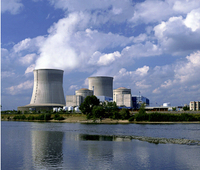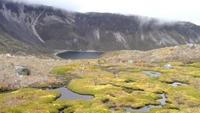-
U.S. nuclear reactors vulnerable to terrorist attack: study
More than ten years after the 9/11 hijackers considered flying a fully loaded passenger jet into a Manhattan area nuclear reactor, U.S. commercial and research nuclear facilities remain inadequately protected against two credible terrorist threats — the theft of bomb-grade material to make a nuclear weapon, and sabotage attacks intended to cause a reactor meltdown. A new report finds that none of the 104 commercial nuclear power reactors in the United States is adequately protected — but among the most vulnerable are eleven reactors in California, Connecticut, Florida, Maryland, Massachusetts, Missouri, New York, North Carolina, Texas, and Virginia. One of these reactors, on the grounds of the National Institute of Standards and Technology (NIST), is among the three research reactors fueled with bomb-grade uranium, and is located in the Washington, D.C. suburb of Gaithersburg, less than twenty-five miles from the White House.
-
-
Bacteria in drinking water are essential to keeping it clean

Researchers point the way to more sophisticated and targeted methods of ensuring our drinking water remains safe to drink, while still reducing the need for chemical treatments and identifying potential hazards more quickly.
-
-
U.S. nuclear facilities vulnerable to terrorist attack: study

Some U.S. nuclear facilities are inadequately protected against theft of weapons-grade materials and sabotage by terrorists. Terrorist attacks on vulnerable nuclear facilities could trigger a meltdown or lead to a diversion of bomb-grade uranium. The danger is far from hypothetical since the 9/11 hijackers are known to have considered flying a passenger jet into a U.S. nuclear reactor before they settled on the World Trade Center as their main terror target.
-
-
Site of proposed Los Angeles skyscrapers may contain active seismic fault
Officials at New York-based Millennium Partners have agreed to dig a trench on a site proposed for two towers, thirty-nine and thirty-five stories tall, flanking the iconic Capitol Records building in Los Angeles. Opponents of the project say there is an active seismic fault under the planned location for the two towers, and the developer says the trench will allow geologists to see whether or not it would be safe to build the towers on the proposed site. Critics say that a panel of neutral experts, led by state officials, should do the geological investigation.
-
-
Better approach toward projecting, planning for rising sea levels on a warmer Earth
More useful projections of sea level are possible despite substantial uncertainty about the future behavior of massive ice sheets, according to Princeton University researchers. The researchers present a probabilistic assessment of the Antarctic contribution to twenty-first century sea-level change. Their methodology folds observed changes and models of different complexity into unified projections that can be updated with new information. This approach provides a consistent means to integrate the potential contribution of both continental ice sheets — Greenland and Antarctica — into sea-level rise projections.
-
-
Bolstering national grid resilience as extreme weather events intensify
Between 2003 and 2012, an estimated 679 widespread power outages in the United States occurred due to severe weather. A recent Congressional Research Service study estimates the inflation-adjusted cost of weather-related outages at $25 to $70 billion annually. A new White House report says that grid resilience is increasingly important as climate change increases the frequency and intensity of severe weather.
-
-
Groundwater in Vietnam threatened by a new source of arsenic
In Southern Asia, an estimated 100 million people have been exposed to risks from groundwater contaminated with naturally occurring arsenic. The tainted water, used for drinking, agriculture, and industry, has resulted in a variety of serious health risks, including cancer. “Dig deep” to avoid naturally occurring arsenic contamination has been promoted as an answer to obtaining safe water in South Asia, but arsenic has been found in numerous deep wells drilled in the Mekong Delta region of southern Vietnam.
-
-
Safety engineers welcome Obama’s chemical facility safety Executive Order
The American Society of Safety Engineers (ASSE) said it supports President Obama’s Executive Order to improve federal agency coordination of U.S. chemical facility safety and security oversight. The ASSE notes that while the causes of each chemical incident are unique and require careful investigation to help ensure similar incidents do not reoccur, common to every incident are the often overlapping and sometimes confusing layers of regulatory responsibility over facilities where potentially harmful chemicals are produced or stored.
-
-
Small modular reactors (SMEs) a “poor bet” to revive U.S. nuclear renaissance: report
A shift to small modular reactors (SMRs) is unlikely to breathe new life into the troubled U.S. nuclear power industry, since SMRs will likely require tens of billions of dollars in federal subsidies or government purchase orders, create new reliability vulnerabilities, as well as concerns in relation to both safety and proliferation, according a report issued last week.
-
-
A 34-story wooden skyscraper to be built in Stockholm
A Swedish architectural form is building a 34-story wood skyscraper in downtown Stockholm. Solid wood will be the predominant material in the building’s pillars and beams, while inside the apartments, walls, ceilings, fittings and window frames will be also constructed of wood.The firm says that wood is not only cheaper than either steel or concrete, but is also more fire resistant than both. This is due to 15 percent of wood mass being water, which will evaporate before the wood actually burns. In addition, logs get charred which protects the core.
-
-
Aging grid limiting exploitation of wind power potential
Energy firms and utility companies continue to invest in wind power, as evident in the increasing number of wind turbines on the prairies of the Midwest, but the aging infrastructure of the nation’s power grid is limiting the potential of this clean energy source.
-
-
Global warming threatens South American water supply: study

Chile and Argentina may face critical water storage issues due to rain-bearing westerly winds over South America’s Patagonian Ice-Field to moving south as a result of global warming.
-
-
Virtual nuke control room helps nuclear operators, industry
Modernizing nuclear power plants to help extend their operating lifetimes is no small task. The endeavor offers an opportunity to improve control-room design and layout. The Department of Energy’s new Human System Simulation Laboratory (HSSL) at Idaho National Laboratory (INL) is a full-scale virtual nuclear control room that can test the safety and reliability of proposed technology replacements before they are implemented in commercial nuclear control rooms. The facility is now helping Duke Energy embark on an upgrade project for several of its nuclear plant control rooms.
-
-
Assessing the risks of global aftershock
The entire world becomes an aftershock zone after a massive magnitude (M) 7 or larger earthquake — but what hazard does this pose around the planet? Researchers are working to extend their earthquake risk estimates over a global scale, as they become better at forecasting the impact of aftershocks at a local and regional level.
-
-
Mapping out an alternative energy future for New York
New York governor Andrew Cuomo will soon decide whether to approve hydraulic fracturing for natural gas in the state. To date, no alternative to expanded gas drilling has been proposed.A new study finds that it is technically and economically feasible to convert New York’s all-purpose energy infrastructure to one powered by wind, water, and sunlight (WWS).
-
More headlines
The long view
Helping Strengthen America’s Critical Infrastructure
Everyday life depends on a robust infrastructure network that provides access to running water, communications technology and electricity, among other basic necessities. The experts who keep our national infrastructure secure and resilient also need a strong network to share their knowledge and train the next generation of professionals capable of solving complex infrastructure challenges.
AI and the Future of the U.S. Electric Grid
Despite its age, the U.S. electric grid remains one of the great workhorses of modern life. Whether it can maintain that performance over the next few years may determine how well the U.S. competes in an AI-driven world.
Using Liquid Air for Grid-Scale Energy Storage
New research finds liquid air energy storage could be the lowest-cost option for ensuring a continuous power supply on a future grid dominated by carbon-free but intermittent sources of electricity.
Enhanced Geothermal Systems: A Promising Source of Round-the-Clock Energy
With its capacity to provide 24/7 power, many are warming up to the prospect of geothermal energy. Scientists are currently working to advance human-made reservoirs in Earth’s deep subsurface to stimulate the activity that exists within natural geothermal systems.
Experts Discuss Geothermal Potential
Geothermal energy harnesses the heat from within Earth—the term comes from the Greek words geo (earth) and therme (heat). It is an energy source that has the potential to power all our energy needs for billions of years.
